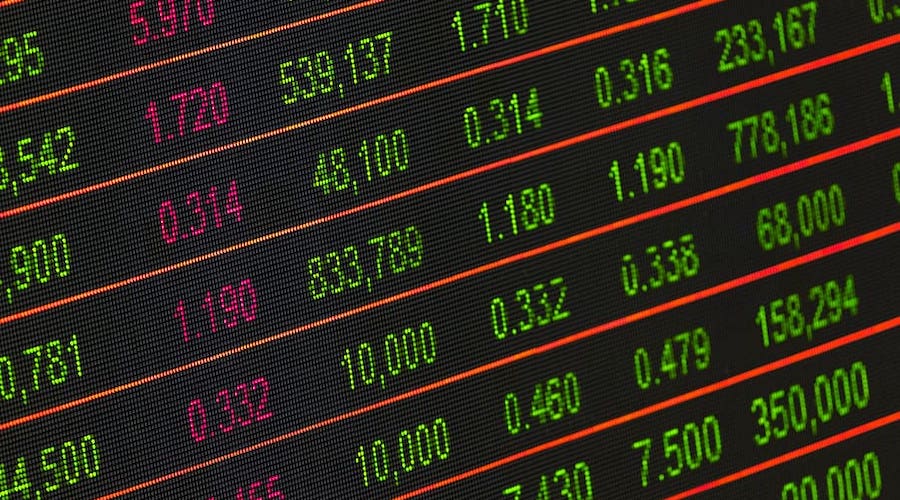
After this year’s record-setting rally in equities, the list of things that could go wrong in 2022 is getting longer.
From slower earnings and economic growth to surging inflation that could prompt central banks to tighten policies too quickly, stock investors face plenty of risks.
That’s making some of Wall Street’s top brokers more cautious. Bank of America Corp. expects flat returns through 2022 for the S&P 500 index, while Morgan Stanley’s Michael Wilson sees the positive trend continuing until Thanksgiving at best. Even bulls like Goldman Sachs Group Inc. see valuation pressures intensifying next year.
While most Wall Street strategists remain positive on equities amid a lack of alternatives, here are five things that could ruin the party:
This year’s post-pandemic profit surge is likely to return to earth as companies grapple with supply constraints and higher raw-material costs just as the post-lockdown boom in demand fades.
Global earnings-per-share will rise just 5% in 2022, down from an estimated 50% this year, Citigroup Inc. strategists led by Mert Genc wrote in a note. Those at Sanford C. Bernstein see consensus EPS growth of 6.5% for European companies and 8% for U.S. peers.
“A rising tide will no longer lift all boats,” said Nigel Bolton, co-chief investment officer of BlackRock Fundamental Equities, predicting an increasing differentiation between sector performances.
Investors should identify companies that have diversified their network of suppliers, such as some of the largest European carmakers, as they can better weather disruptions, he says, noting that smaller companies may struggle.

Higher prices have lingered longer than policymakers initially expected in the rebound from the pandemic.
“Above-target inflation is likely to grip the global economy until late 2022,” said Seema Shah, chief strategist at Principal Global Investors.
And because markets have priced in the possibility that the bulge in inflation is transitory, there may be little by way of a relief rally even if the dynamics ease, Goldman Sachs strategists Dominic Wilson and Vickie Chang wrote.

Since generous monetary policy has been among the strongest drivers of the past year’s equity rally, one of the biggest risks is that central banks will turn hawkish too quickly in response to inflation.
Aggressive rate increases will close the “circle of troubles for equity investors,” said Peter Garnry, head of equity strategy at Saxo Bank, as it will spur a rise in input costs across commodities, energy, wages and financing, and reset already elevated stock valuations.
If policy is tightened too little too late, quality stocks with pricing power and the ability to pass on cost pressures should fare relatively well, said to Rupert Thompson, chief investment officer at Kingswood.

Thomas McGarrity, head of equities for RBC Wealth Management, seconds the recommendation on pricing power, and suggests a blend of secular growth stocks, select quality cyclicals and defensives for 2022.
The risk for next year is growth stalling as “confidence and animal spirits wane,” according to Joe Little, global chief strategist at HSBC Asset Management. “That would imply more of a W-shaped growth path, and would undermine value equities.”
Bracing for a “more hostile” macro backdrop, Savvas Savouri, chief economist at Toscafund Asset Management, recommends “index-linked bonds, cash, defensive equities — staples, health care and lots and lots of tinned food.”

The first few months of 2022 will be more challenging for cyclical regions like the euro area and Japan, said Max Kettner, multi-asset strategist at HSBC, recommending markets with a defensive bias such as the U.S., and the U.K., given the likelihood of weaker sterling.
The main drag on global growth is China, where a real estate debt crisis is widening. A higher China risk premium would especially weigh on mining, cars and capital-goods stocks in Europe, says Mathieu Racheter, head of equity strategy at Bank Julius Baer.

While Covid-19 is no longer at the top of market participants’ list of worries, it hasn’t gone away. Cases hit a record in Germany as a fourth wave of infections hits Europe, while China is facing its broadest outbreak since the virus emerged in Wuhan in 2019.
If You Thought Pandemic Risk Was Over, Think Again: Taking Stock
Among the list of potential triggers for abrupt market shocks in 2022 is the emergence of a vaccine-resistant coronavirus strain, according to Toscafund’s Savouri. Others include geopolitical tensions between China and Taiwan and the possibility of a trade war between the U.K. and the European Union.
(By Michael Msika and Nikos Chrysoloras)
Comments